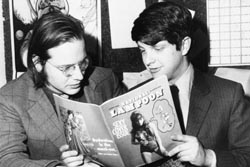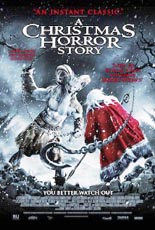
 Our world is divided into two types of people: those who love White Christmas and those who prefer Black Christmas. ’Tis the latter group to which Flick Attack claims lifetime membership and for whom A Christmas Horror Story is made. Gifted by directors Grant Harvey, Steven Hoban and Brett Sullivan — all of whom had a paw in the Ginger Snaps franchise — the Canadian anthology jumps between four interwoven yuletide tales taking place on Christmas Eve, almost entirely in the quaint town of Bailey Downs.
Our world is divided into two types of people: those who love White Christmas and those who prefer Black Christmas. ’Tis the latter group to which Flick Attack claims lifetime membership and for whom A Christmas Horror Story is made. Gifted by directors Grant Harvey, Steven Hoban and Brett Sullivan — all of whom had a paw in the Ginger Snaps franchise — the Canadian anthology jumps between four interwoven yuletide tales taking place on Christmas Eve, almost entirely in the quaint town of Bailey Downs.
Some curious students break into their high school in order to shoot a documentary about the grisly, ritualistic slayings of two schoolmates the year prior. A down-to-earth family of three drives into the wild to cut down a Christmas tree and, having trespassed on private property, ends up taking home something entirely unintended. A greedy family of four makes a trek to visit a wealthy relative and accidentally unleashes Krampus (Rob Archer, Bulletproof Monk). And finally, Santa Claus (George Buza, Diary of the Dead) switches from sleigh mode to slay mode when his elves succumb to an ill-timed zombie virus.
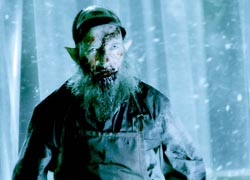 Serving as a loose wraparound, Star Trek’s William Shatner spins holiday tunes and comments on Bailey Downs’ goings-on as Dangerous Dan, the radio station’s night-shift DJ. While Shatner is present for pure merriment and a healthy sense of humor permeates the entire affair, A Christmas Horror Story is no winking joke, as Harvey, Hoban and Sullivan work hard to stuff this stocking with heaps of the creeps. Moving between its multiple storylines as deftly as Doug Liman’s Go, the film generates goodwill in its energetic depictions of naughty-list acts. A pair of solid scares and a purposely discomforting encounter pop up on the way toward a big twist as surprising as it is disturbing.
Serving as a loose wraparound, Star Trek’s William Shatner spins holiday tunes and comments on Bailey Downs’ goings-on as Dangerous Dan, the radio station’s night-shift DJ. While Shatner is present for pure merriment and a healthy sense of humor permeates the entire affair, A Christmas Horror Story is no winking joke, as Harvey, Hoban and Sullivan work hard to stuff this stocking with heaps of the creeps. Moving between its multiple storylines as deftly as Doug Liman’s Go, the film generates goodwill in its energetic depictions of naughty-list acts. A pair of solid scares and a purposely discomforting encounter pop up on the way toward a big twist as surprising as it is disturbing.
You better watch out for it and I’m telling you why: It’s a ton of fun. —Rod Lott

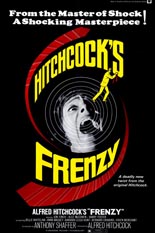
 Even the world’s greatest director had his off days, and
Even the world’s greatest director had his off days, and 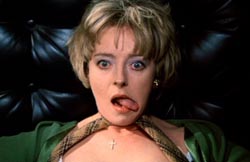
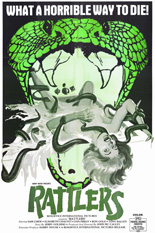
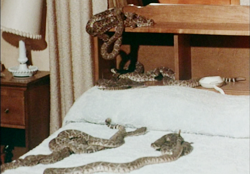
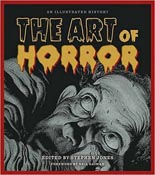
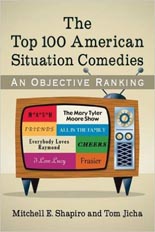
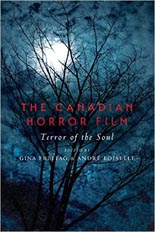
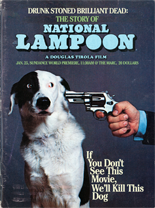
 When I spied a copy of
When I spied a copy of 